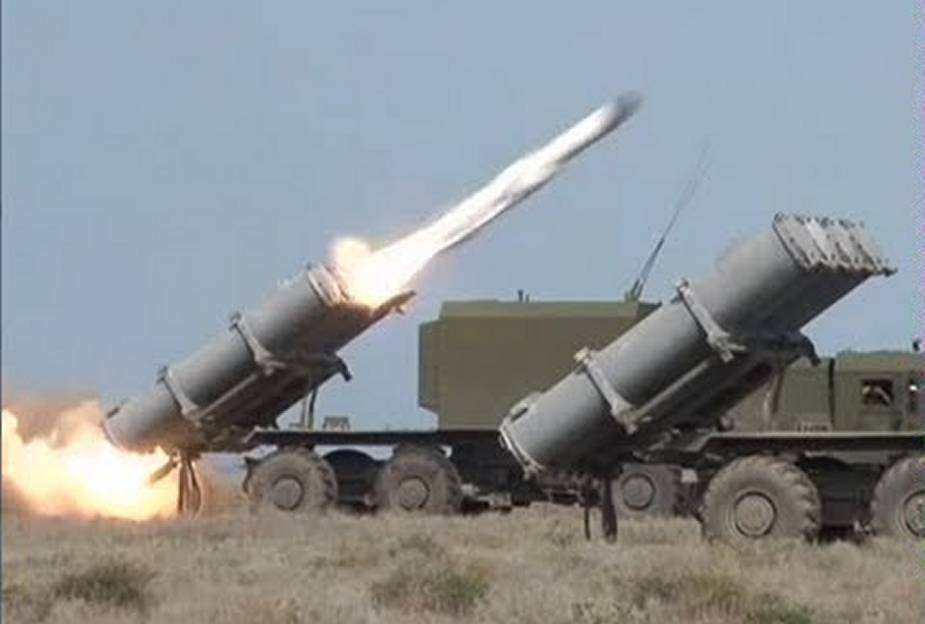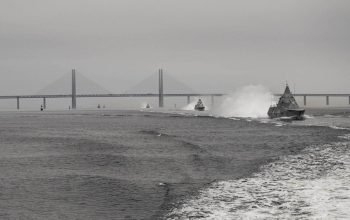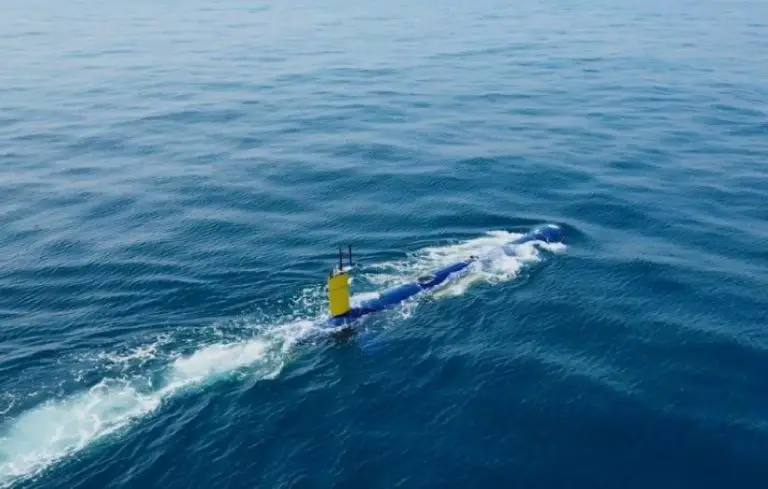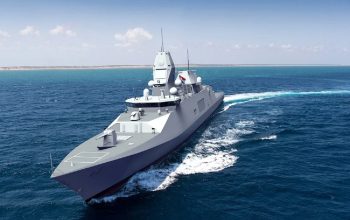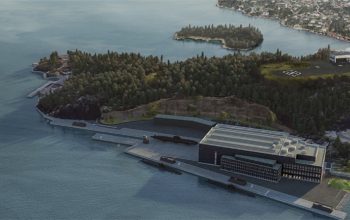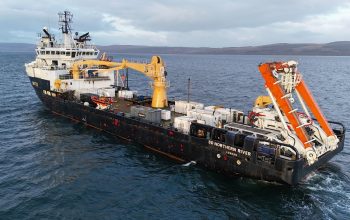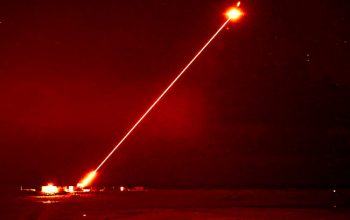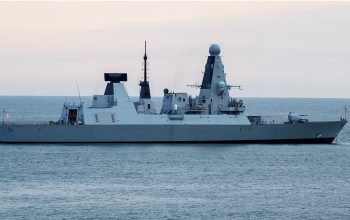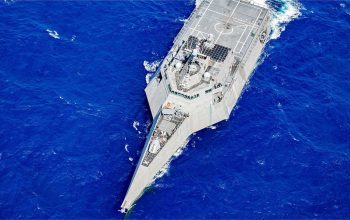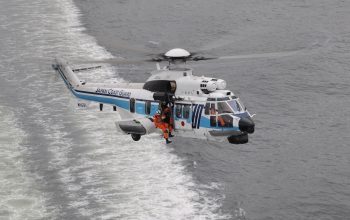The crews of the Russian coastal missile system (DBK) “Ball” of the Caspian Flotilla in the course of a planned tactical exercise worked out strikes. The personnel of the DBK went to the training grounds, where they worked out various tasks including the use of Orlan-10 and Eleron-3 unmanned aerial vehicles. The calculations of the Ball system carried out electronic launches of anti-ship missiles at surface targets of the simulated enemy and discrecretly changed positions. In addition to performing training tasks, the flotilla’s missilemen are on constant combat duty for the protection and defense of the sea borders and the coast of the Caspian Sea. In total, about 200 military personnel and 20 pieces of equipment were involved in the exercises.
The Zvezda Kh-35 is a Soviet turbojet subsonic cruise anti-ship missile. The same missile can also be launched from helicopters, surface ships and coastal defence batteries with the help of a rocket booster, in which case it is known as Uran (‘Uranus’, SS-N-25 ‘Switchblade’) or Bal (‘Ball’, SSC-6 ‘Sennight’). Zvezda started work on the Kh-35 in 1983 by a decree of the USSR Council of Ministers and the USSR CPSU Central Committee to arm ships of medium tonnage. It is designed to attack vessels up to 5,000 tonnes. The Kh-35 missile is a subsonic weapon featuring a normal aerodynamic configuration with cruciform wings and fins and a semisubmerged air duct intake. The propulsion unit is a turbofan engine. The missile is guided to its target at the final leg of the trajectory by commands fed from the active radar homing head and the radio altimeter.
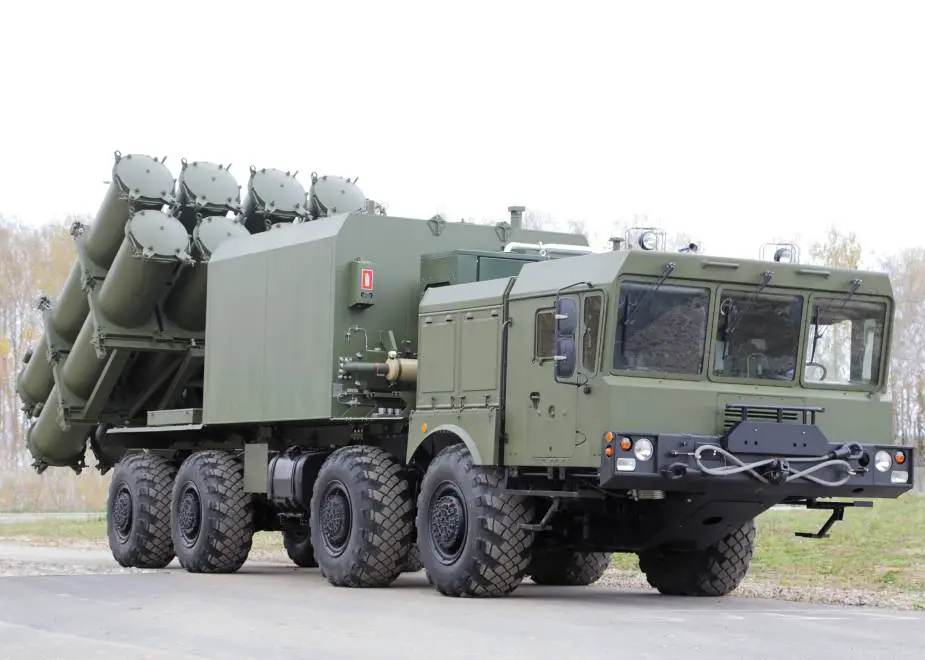
Target designation data can be introduced into the missile from the launch aircraft or ship or external sources. Flight mission data is inserted into the missile control system after input of target coordinates. An inertial system controls the missile in flight, stabilizes it at an assigned altitude and brings it to a target location area. At a certain target range, the homing head is switched on to search for, lock on and track the target. The inertial control system then turns the missile toward the target and changes its flight altitude to an extremely low one. At this altitude, the missile continues the process of homing by the data fed from the homing head and the inertial control system. The Kh-35 can be employed in fair and adverse weather conditions at sea states up to 5–6, by day and night, under enemy fire and electronic countermeasures.
The Kh-35 missile entered service in 2003. In July 2003, the system created by the “Tactical Missiles Corporation” passed the state tests and began to come into service of ships of the Russian Navy. A Bal system has four self-propelled launcher vehicles each carrying eight missiles for a total of 32 missiles in a salvo, plus reloads for another wave. The launchers can be up to 10 km from the coast and hit targets at ranges up to 120 km (75 mi; 65 nmi). Currently, the Bal system is equipped with an upgraded version of the Kh-35E increasing range to 300 km (190 mi; 160 nmi). At IMDS 2019, a new version of the Russian Bal-E coastal defence system was presented for the 1st time. The 4-tube Rubezh-ME, dedicated to the export market, is based on a Kamaz 63501 8×8 chassis which is more compact than the MZKT-7930 of the original Bal-E.


